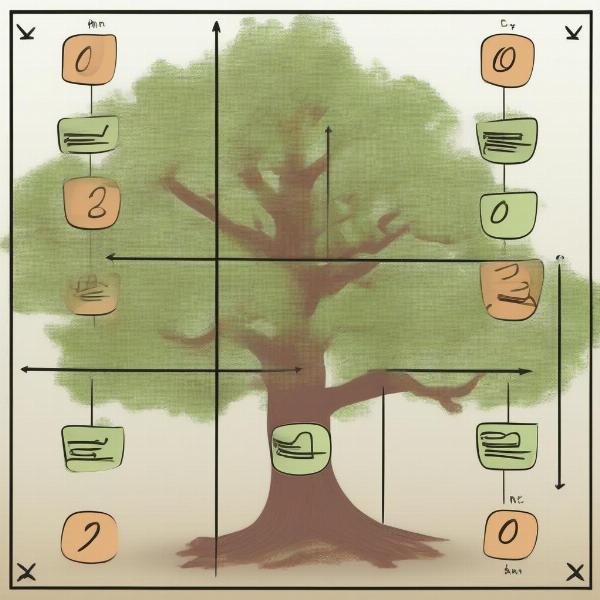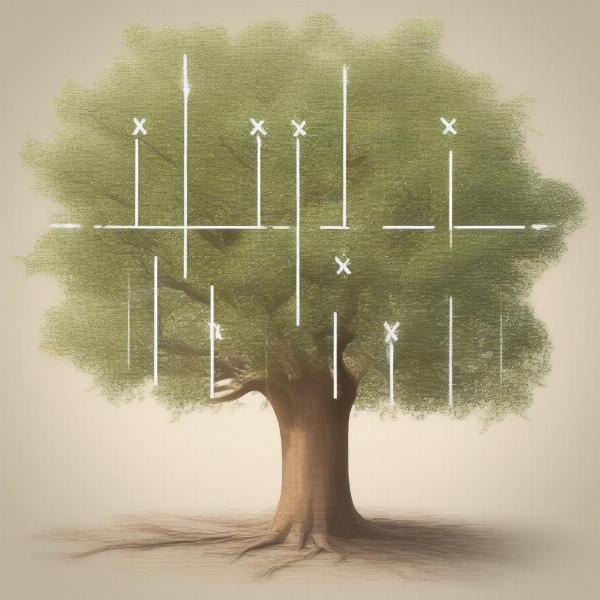War games and tic tac toe might seem worlds apart, but the classic children’s game provides a foundational understanding of strategic thinking applicable even to complex military simulations. In fact, the core principles of tic tac toe can be explored through the minimax algorithm, a decision-making tool used in artificial intelligence and game theory to determine the best possible move in a zero-sum game – a game where one player’s gain is equivalent to the other’s loss.
Understanding Minimax in Tic Tac Toe
The minimax algorithm works by exploring all possible game states, assigning scores to each outcome, and choosing the path that maximizes the minimizing player’s potential loss. In simpler terms, it assumes your opponent will always make the best move for them, and you should, in turn, select the move that minimizes their maximum potential gain. This ensures you choose the move with the least worst outcome, even if your opponent plays optimally.
Breaking Down the Minimax Process
The minimax algorithm operates recursively, working backward from the end of the game. It assigns a score to each terminal state (win, lose, or draw):
- Win: +1 (for the maximizing player)
- Lose: -1 (for the maximizing player)
- Draw: 0
From these terminal states, the algorithm works upward, assigning scores to each preceding node based on the scores of its children. Maximizing nodes select the child with the highest score, while minimizing nodes select the child with the lowest score. This process continues until the root node (the current game state) is reached, revealing the optimal move.
 Minimax Algorithm Visualization in Tic Tac Toe
Minimax Algorithm Visualization in Tic Tac Toe
Implementing Minimax: A Step-by-Step Guide
Let’s break down how to implement the minimax algorithm in a tic tac toe game:
- Create a Game State Representation: Define a way to represent the current state of the board (e.g., using a 2D array).
- Define a Terminal State Check: Implement a function to determine if the game has ended (win, lose, or draw).
- Implement a Scoring Function: Create a function to assign scores to terminal states as described earlier (+1, -1, or 0).
- Develop the Minimax Function: This recursive function will:
- Check for a terminal state.
- Generate all possible moves from the current state.
- Recursively call the minimax function for each possible move, switching between maximizing and minimizing perspectives.
- Return the best score and corresponding move.
Optimizing Minimax with Alpha-Beta Pruning
While effective, the basic minimax algorithm can be computationally expensive for more complex games. Alpha-beta pruning optimizes the process by eliminating branches of the game tree that are guaranteed to be worse than previously explored options. This significantly reduces the number of nodes evaluated, making the algorithm more efficient.
 Alpha-Beta Pruning Example in Tic Tac Toe
Alpha-Beta Pruning Example in Tic Tac Toe
From Tic Tac Toe to War Games: Scalability and Applicability
The core concepts of minimax, even in a simple game like tic tac toe, lay the groundwork for understanding more complex decision-making in war games. While the sheer number of possible moves in a war game makes a direct application of minimax impractical, variations and adaptations of the algorithm, combined with other AI techniques like Monte Carlo Tree Search, are frequently used in developing sophisticated AI opponents for military simulations. These algorithms allow AI to evaluate strategic options, anticipate enemy actions, and make informed decisions in complex, dynamic environments.
“In the realm of strategic decision-making, even seemingly simple games like tic tac toe offer valuable insights into the fundamental principles of optimizing choices. Minimax provides a framework for understanding rational decision-making in adversarial situations, a concept crucial in fields ranging from game development to military strategy.” – Dr. Anya Sharma, AI Researcher at the Institute for Strategic Studies.
Beyond the Algorithm: Human Intuition and Strategic Thinking in war games
While algorithms like minimax provide a powerful tool for analyzing strategic decisions, human intuition and experience remain invaluable, particularly in the context of war games. Factors like psychological warfare, deception, and unpredictable human behavior introduce complexities that are difficult to capture in a purely algorithmic approach.
 Human vs. AI Strategic Thinking in War Games
Human vs. AI Strategic Thinking in War Games
Conclusion: War Games Tic Tac Toe – A Foundation for Strategic Mastery
War Games Tic Tac Toe, while a simplified analogy, offers a valuable entry point into understanding the fundamentals of strategic thinking and the application of algorithms like minimax in complex decision-making scenarios. By mastering the principles of minimax in tic tac toe, one can begin to appreciate the challenges and complexities of developing AI for war games and the ongoing interplay between algorithmic analysis and human intuition in the realm of strategic decision-making. Explore the world of minimax and unlock the secrets behind strategic thinking!
FAQ
-
What is the minimax algorithm used for? The minimax algorithm is a decision-making tool used in game theory and artificial intelligence to determine the best possible move in a zero-sum game.
-
How does minimax work in tic tac toe? Minimax explores all possible moves, assigning scores to wins, losses, and draws. It chooses the path that maximizes the player’s minimum potential gain (or minimizes their maximum loss).
-
What is alpha-beta pruning? Alpha-beta pruning is an optimization technique used to improve the efficiency of the minimax algorithm by eliminating unnecessary branches from the game tree.
-
Can minimax be used in real war games? While a direct application is often impractical due to complexity, variations of minimax and other AI techniques are used in military simulations.
-
Why is human intuition still important in war games? Human factors like psychology, deception, and unpredictable behavior add complexities that are difficult to fully capture in algorithms.
-
What is a zero-sum game? A zero-sum game is a situation where one player’s gain is exactly balanced by the losses of the other player(s).
-
How does tic tac toe relate to war games? Tic tac toe provides a simplified model for understanding strategic thinking, decision-making, and adversarial scenarios relevant to more complex war games.

